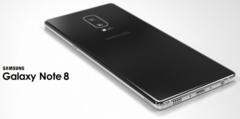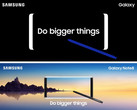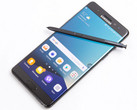The iPhone 8 and Galaxy Note 8 are two of the most anticipated smartphones releasing this year. It's looking like Samsung will yet again go head-to-head with Apple — this time on price. Posting on Venturebeat, noted leaker Evan Blass shared the scoop that the Note 8 is slated for an MSRP of €999 (US$1100). Blass has a solid track record for the accuracy of his information, so this would mark a definitive trend for the future prices of flagship phones. The iPhone 8 has also been tipped for an price north of US$1000, but is there a reason for the seemingly ever-increasing price of flagship phones?
The average launch price of Samsung's phones has steadily increased over the past five years, and this news does nothing to suggest that this trend will reverse anytime soon. It isn't just Samsung, either; Analysis by Android Authority revealed steadily increasing launch prices for flagship phones over the past five years by Samsung, LG, HTC, Sony, and Apple, with an average of a 25 percent increase during that period. There is a justifiable reason for it, though: today's flagship smartphones have to pack more and more features in order to convince consumers to upgrade to the latest model. More features means more hardware, such as fingerprint or iris scanners, fast-charging batteries, improved speakers, and more premium build materials. In short, these phones are costing more to manufacturer due to the raw materials needed, and flagship phones have a higher mark-up and profit margin which exacerbates the effect.
As reported, the Note 8 will be officially revealed in late September, featuring a 6.2-inch AMOLED display, dual main cameras, S Pen stylus, and more storage and RAM (6GB) than the S8 or S8+. This setup will make the Note 8 the first Samsung phone with a dual rear-camera setup, though it will continue the (somewhat controversial) trend of a fingerprint scanner next to the cameras. In terms of software, the Note 8 is said to have improved split-screen multitasking (aided by the device's 18.5:9 aspect ratio for vertical split-screening) and the ability to pin handwritten notes to its always-on display.



















